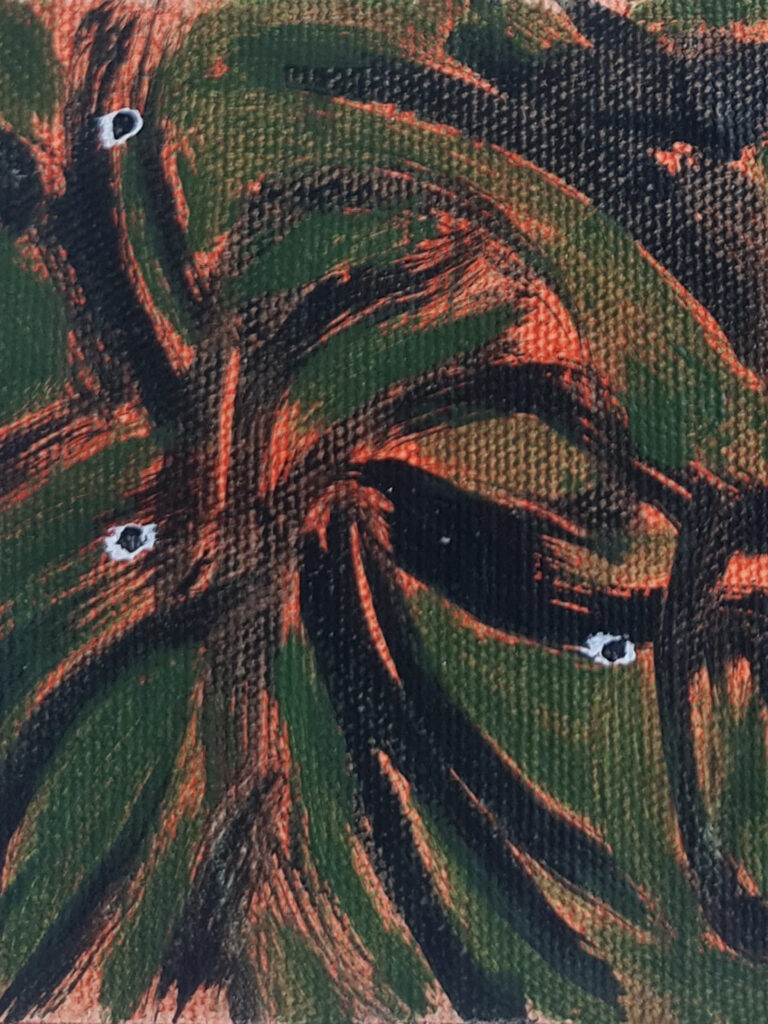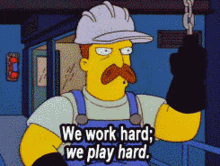Looking up, honesty and flirtatiousness
It was incredibly refreshing and stimulating to come to Turf Projects the day after the EU referendum results and to talk about what three artists had been doing. Not only did it allow me to escape my own head and the sinking feeling that seemed to lie beneath everything else, but it also reminded me that its exciting, humbling and necessary to be together, speaking about our ideas and view points; conceptual, political or experiential.
When you put your work out in the open, it’s not a joke. It also shouldn’t be taken too seriously – hard to do, speaking from experience. Nancy Allen, London-based artist who graduated from Wimbledon College of Art in Fine Art Sculpture, wanted to discuss a new work-in-progress. this is not a joke, she said – an interesting and unexpected point for a discussion around which we could approach what she described as an honest sculpture; raw and unapologetic, composed of a large slab-like wedge of speckled polystyrene, bolstered by a seemingly under-sized square of plywood. By the force of gravity, and a few slits into the material, a white piece of polystyrene and short swaths of bright orange mesh held one another up against the central rectangular form. At what point can we just let the materials be? Was the artwork finished? Key questions when the crux of the work is a set of four largely unaltered found materials. However it seemed through our discussions that the more overworked, the less it would stand up for itself. By the very nature of the colours and materials chosen, it looked flimsy, fragile; it almost wafted in the breeze coming from the open door of the gallery. But this is not to say it needed further work. Elements such as filings of polystyrene churned out in the process of feeding the mesh into the material, acted like a phantom for the maker, as if the maker just left, or was in fact coming back any minute. What does this do? When we can see how something is made, or sense the artist making it? From my perspective, it adds a live quality to the materials, and suggests they are not necessarily going to remain in the formation we see them in forever. Perhaps new iterations, perhaps they last for as long as their properties allow them to. With this in mind the work was discussed as a maquette or model – the feeling that a body and a material came together to quickly realise a thought. Despite maquettes suggesting further finalised and polished end points, this work didn’t appear to be suggesting a future of a more polished self. It did, as mentioned, suggest that there was an interchangeability to the materials, but the process would likely remain constant. Gravity and verticality was one of Nancy’s interests, expressed by her desire to make a work that was bolt upright, and in accordance to her own bodily scale. This had been one of the many successful elements it seemed – we each navigated around the work in a circulate motion to see each of its sides, as if it were a person standing idly in the room.
We moved to the table to gather around a map and laptop to discuss Catherine Stephenson’s ‘Street Trails’ project. Catherine had recently ended her Fine Art degree at Croydon College. The ongoing archive and alternative source of information on Croydon that is ‘Street Trails’, seemed to largely be about promoting views of the city that are not sufficiently engaged with. The aim being that the online platform is populated by contributions from those curious and pro-active enough to look engage and share these perspectives. As we were led through the website and physical folded map (presenting one example of a trail) Catherine described how she observed Croydon’s inhabitants, walking to and from the station with their necks keeled over their smartphones; their view point confined to their right hand, or at a push, straight in front of them. The fact that we rarely look up above the shop fronts of historic buildings (of which Croydon has many), or round the backstreets, is something Street Trails seems to want to tap into. It also responds to a need to expose the nuance and history of the market town at a time when the regeneration project is set to take place in 2020. We discussed the notion of a city not being seen, and Catherine’s personal motivations to expose the details of the city that she notices, and subsequently photographs; signages, the remnants of non-existent buildings, graffiti. It was suggested that ‘Street Trails’ had the potential to be a community resource, and something that should be used by other groups, the council; something that even forms a dialogue with Turf Project’s Stones of Croydon drawing trails. By presenting the project in this crit by verbally guiding us through the website/map, suggesting even how the map should be handled, I noted how much Catherine’s way of speaking felt integral to our understanding of what ‘Street Trails’ is, and how we may go about engaging with it. I can’t help but suggest the idea of guided tours, as an interesting avenue to go down..
Adeline McCann who is currently studying Fine Art and History of Art at Goldsmiths presented two sets of sculptural works, that we initially read as one installation. Adeline’s work to date has involved using close-up photography to play with trickery, illusion and the subversion of materials, using kitsch, inexpensive imitations to materials such as marble, velvet, satin. What’s the difference between photographing an object or displaying it physically? What can one medium do, another can’t? Is it necessary to control the view point of the audience, much like a camera can frame a viewpoint, if we are to look at objects and still be successfully tricked? We began in a rather customary way, of describing what we could see, making lovely sensible associations from the sculptural forms in front of us; 1940’s swim caps, wedding fascinator’s.. It quickly materialised we were off-topic. Hats? Well you have to start somewhere in a crit. The materials Adeline had used did, in part, trick us. What appeared to be embossed scalloped seashells, were in fact cheap silk covered Supertex wallpaper. What appeared as felt covered plinths, was a cheap imitation, the kind that’s so thin it starts to show wear and tear from merely handling it. It all felt very QVC shopping channel. But this was a compliment in many ways. What Adeline seemed to be trying to do was to question the signification of a material. What this mean’t in terms of taste, wealth, class. It was about seducing us in, and then failing to meet our expectations. Much like the false notion of the acquisition of happiness once we have money.
‘Flirty’ was a word that I had not encountered lately in the context of a crit, but arose out of our observations. Not only because of the lotus shaped forms that sat peering up at us, part open, part closed, but perhaps because of the feeling that the work was toying with something, playing around, seeking to lure us in, testing the water. These are all things that felt really exciting about where the work could go, and how it could follow through with its flirtations. A first date would be good. What would that look like? Adeline discussed potentially increasing quantity to heighten the illusion, combining photography and sculpture… Finally, the topic of plinths. The variables are limited, and endless at the same time. What height? What depth? An important question for an artist who is playing with trickery and illusion. If we see things in our eye line, or look down on them, if we can walk around them and view all angles, perhaps succeeds or fails at suspending our disbelief.
I would like to thank Nancy, Catherine and Adeline for showing their work. Thank you Turf Projects for the invitation to engage in the Lunch-time crit, and to reflect upon it through writing.
30/06/16
Share:




